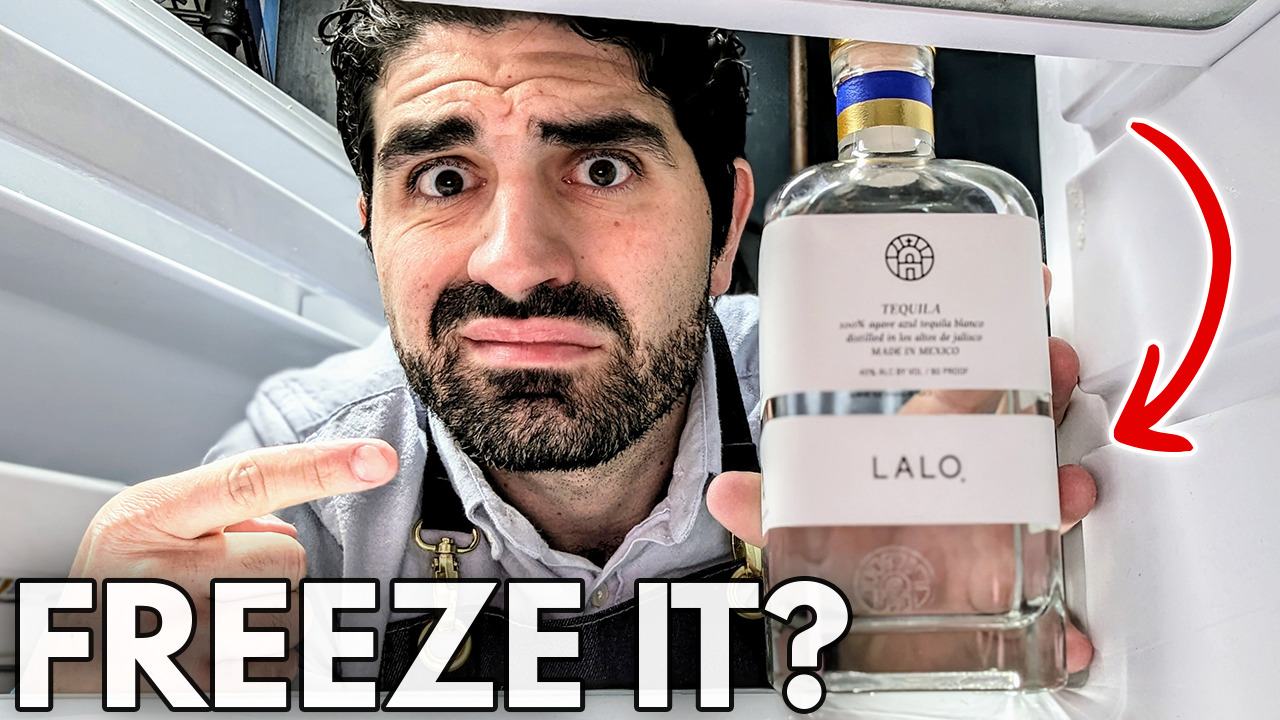Today, we’re going to dive into the controversial topic of “freezing tequila” or as we should call it instead, Putting Tequila in your freezer. I know it’s a popular practice, and many of you might even have a bottle chilling in your freezer right now. But let’s take a moment to explore the reasoning behind this habit and whether it’s actually doing justice to our beloved agave spirit.
So, why do people freeze tequila?
Well, when you lower the temperature of a spirit like tequila, its viscosity increases, giving it a smoother texture. Imagine sipping on a vodka that has been luxuriating in the frosty depths of your freezer—it glides over your taste buds, coats your mouth, and provides a more pleasant drinking experience. The cold also tends to mellow the burn of harsher spirits like vodka, making them easier to enjoy.
Sounds great, right? But here’s the catch: as the temperature drops, so does the intensity of the aromas and flavors present in tequila. Now, this may not be an issue with vodka since it’s known for its neutrality, but tequila is a different beast altogether. It boasts beautiful aromas and natural flavors that can become muted if subjected to freezing temperatures for too long.
But I can already hear some of you saying, “But I love keeping my Casamigos in the freezer! It makes it so much easier to drink.” You’re not entirely wrong. If you have a low-quality tequila, putting tequila in your freezer it might indeed make it more palatable. Some producers cut corners and use additives, resulting in an inferior product with a synthetic vanilla or cotton candy taste. Freezing masks those unwanted flavors, making it easier to swallow.
However, when you come across a truly well-crafted tequila, it’s a different story.
Tequila, my friends, is an incredibly complex spirit, brimming with an array of tantalizing aromas and flavors. It is meant to be savored at room temperature, allowing you to experience the full spectrum of flavors that the master distillers intended when they created this liquid masterpiece.
Think about it—tequila comes from the agave plant, which takes years to reach maturity. It absorbs incredible flavors from its surroundings, including the terroir and the water source. All that time spent in the ground contributes to the unique character of the spirit. By freezing it, you’re essentially sacrificing those distinct flavors and missing out on the true essence of tequila.
Similar to adding ice cubes, putting tequila in your freezer dulls its flavors and aromas. While it may chill the spirit, it deprives you of the opportunity to savor its rich, robust, agave-forward taste. Unlike whiskey, tequila doesn’t need water to “open up.” It stands proud on its own, showcasing the plant that took years to cultivate. Why would you want to mask that?
But fear not, my fellow tequila enthusiasts! There’s a simple solution for those moments when you crave a quick, high-quality sip. Just reach for that bottle on your shelf, pour it into a glass, and enjoy it at room temperature. No fuss, no hassle—just pure tequila pleasure. Sometimes, all we need is to appreciate the spirit in its purest form, without diluting it or burying it in the freezer.
Now, I understand if you have a bottle of subpar tequila that needs a little help to go down smoothly. But for those who invest in sought-after, high-quality tequilas, ask yourself why you’re purchasing them






